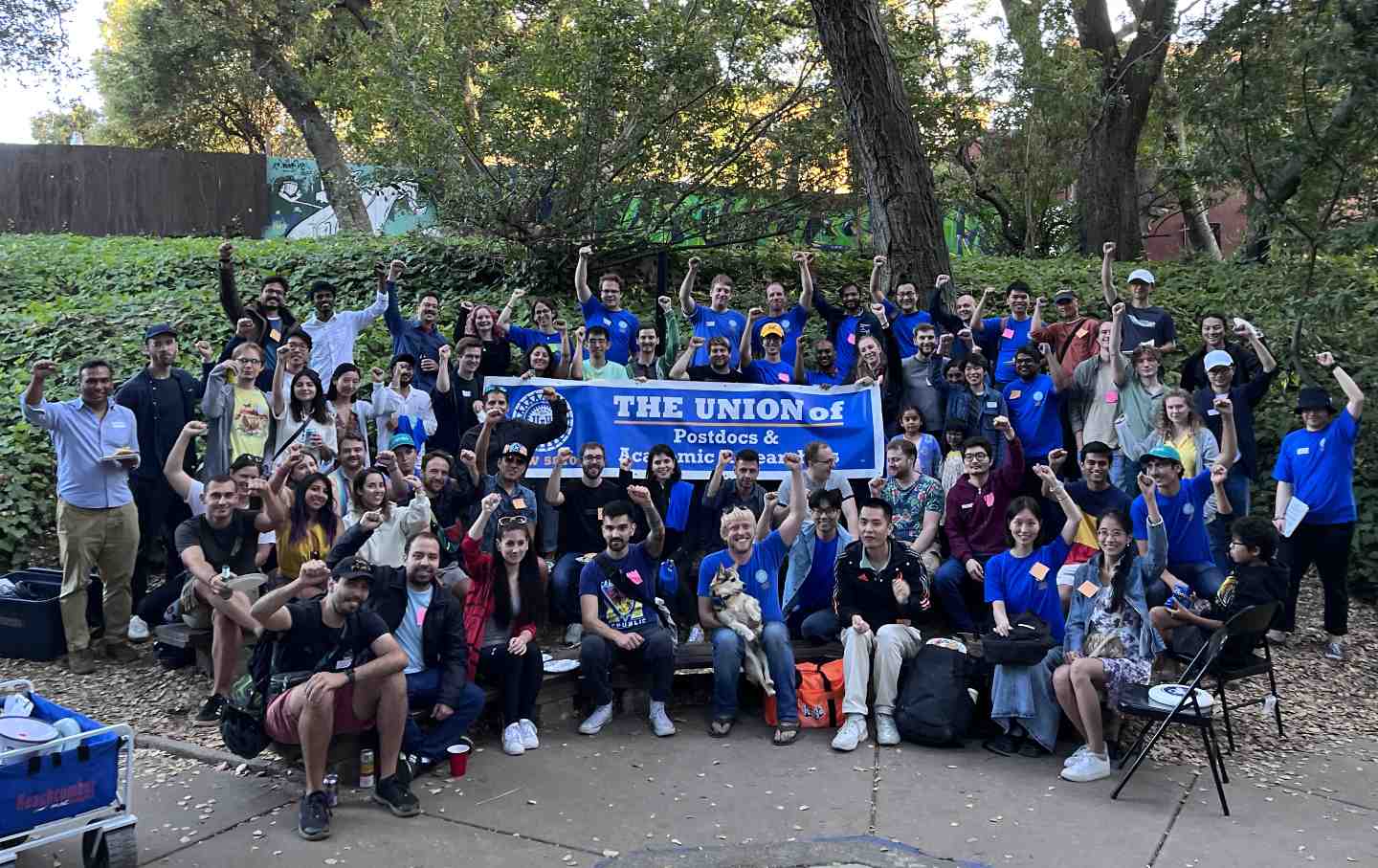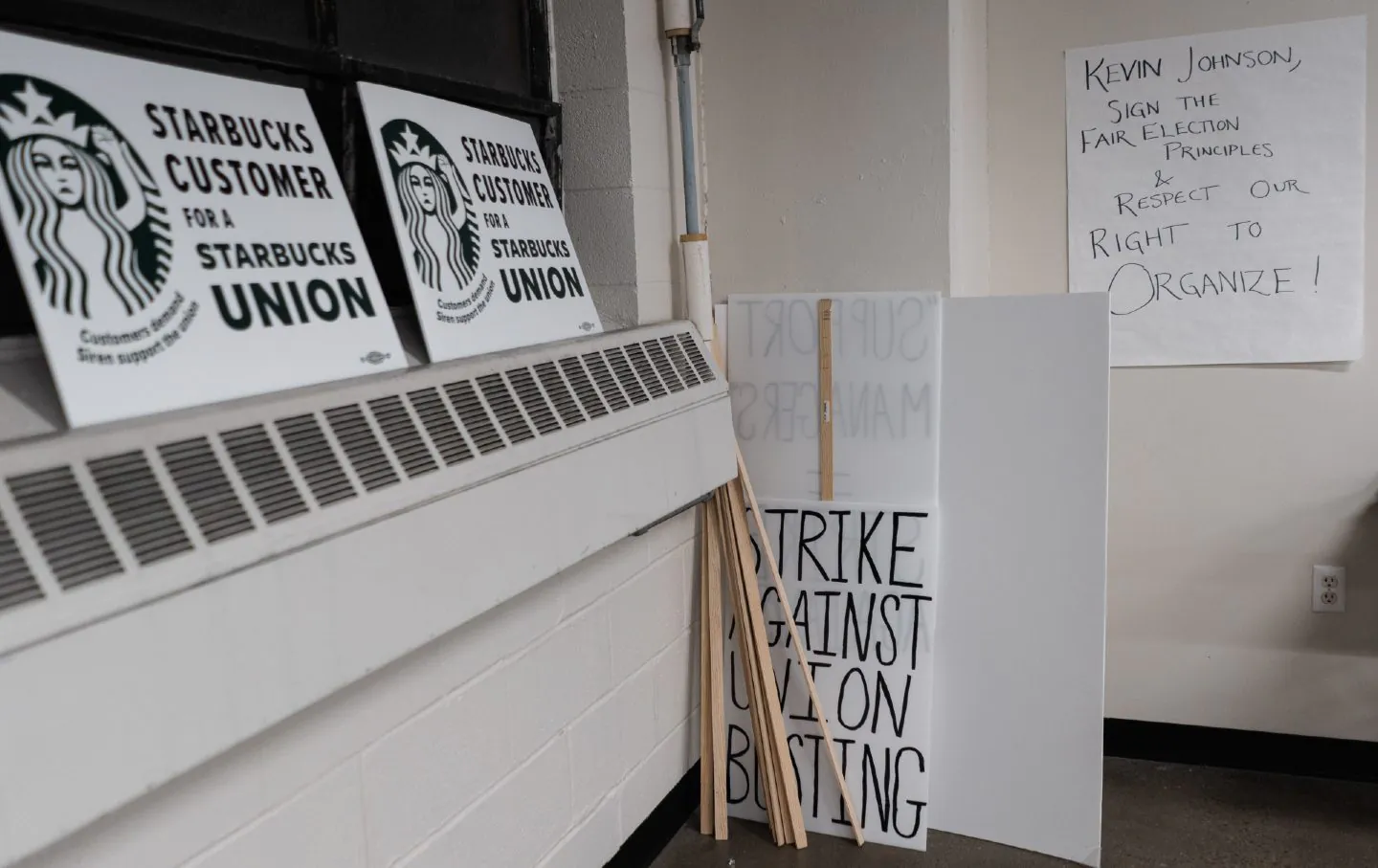[ad_1]
Activism
/
October 17, 2024
Although union approval is historically high, membership remains low. One way to bring about change is to make it easier for workers to form a union and bargain.

The union membership is currently a historic low pointonly 10 percent of the workforce is unionized—and only 6 percent in the private sector. Increasing union density by a single percentage point would require organizing 1.6 million new workers without losing membership elsewhere.
In 2023, despite being a very encouraging the upsurge of strikes and organizingout of roughly 160 million American workers, only 97,977 could vote in the 1986 election. supervised by the National Labor Council.
Even if labor had won every NLRB election (which it didn’t), that growth rate would have been much smaller than the US labor force growth, which averages 1.5 million new workers each year.
Given this sad trajectory, no reversal of membership trends is expected. Major changes will be needed if the labor movement is to become strong enough to build enough labor power to win over workers, for the benefit of the entire working class, and to address economic inequality.
How can the labor movement best be organized on a scale? Erik Loomis is a labor historian commented“There are too many workers in America to rebuild the labor movement in groups of twenty or thirty or even a hundred. You need thousands and thousands of people to join the labor movement at once.”
And as Ben Fong, a Center for Work and Democracy at Arizona State University famous“If the labor movement wants to capitalize on the current popular approval of unions and interest in labor organizing, it needs to pursue big targets in the private sector, in businesses where workers can potentially be added to union rolls. en masse.” We sure do agrees.
Current number

Others pointed out that labor resources could be better used to support the larger organization. Labor researcher Chris Bohner analyzed the fortunes of the workforce and the organizational ineptitude of the current leadership. “This is not a funding issue as the workforce has over $35 billion in net worth.” Again we agree.
Finally, experienced organizers know that building a lasting union in which members exercise real power on the job must be done from the bottom up, worker by worker, as has been the case in all major labor breakthroughs. Today, we benefit from the use of new tools and technologies that make it possible the “distributed” model of self-organization allows employees to directly take on tasks previously performed by paid full-time employees.
However, in the absence of significant legal reforms to the process by which workers obtain their collective bargaining rights, none of the above strategies are likely to succeed.
That is why, with the Harris/Walz victory in sight, it is imperative that we win meaningful labor law reform in the next Congress.
Matt Bruenig as an employment lawyer recently he pointed to it“American labor laws and the bureaucracy they require make mass unionization impossible unless the rules for union certification and contract negotiation are simplified and streamlined.”
The evidence is compelling: Consider the union struggles at Starbucks, Amazon, and Mercedes-Benz. Private sector employers can all too easily use the NLRB’s bureaucratic process to thwart employee initiatives. And if that doesn’t work, they get another bite at the apple through the courts. Too often, justice delayed is justice denied.
Some organizers offered a convincing solution: Strike for recognition.
This strategy is great if the workers are sufficiently united and have the juice to strike. But in our experience, the vast majority of campaign organizers will not be able to reach anywhere near this level of militancy. Most workers are legally sanctioned, democratic process to build majority support and then obtain bargaining rights through the NLRB.
In the political maelstrom surrounding the recent Democratic National Convention, politicians often pledged to adopt the Protection of the Right to Organize (PRO) Actlabor reform law that was introduced after Biden was elected president. He died an ignominious death because the votes weren’t there in the Senate to defeat the Republican filibuster.
While the PRO Act has many good features, it does not address the basic need for “majority registration,” which was a critical part of efforts to pass the Act. Employee Free Choice Act During the Obama years, when the Democrats were in the majority in both the House of Representatives and the Senate. Tragically, the moment of “hope and change” failed when Obama and the Democrats chose other priorities. In March 2007, with the support of 16 Republicans, it received 60 percent of the vote in the House of Representatives. But despite having a clear majority in the Senate, he didn’t have the 60 votes needed to speak.
With “majority registration”, workers wishing to join a union simply sign an authorization indicating their support. Once the majority have signed the cards, employers must recognize their union as the workers’ representative and begin negotiating a collective agreement. THE main advantage over the current process is that this “card check” certificate allows workers to move quickly from building majority support for their union to the bargaining table with their employer.
Unfortunately, the conservative elements of the AFL-CIO and its affiliates decided in 2020 that eliminating card checks was the best way to gain broader support for the PRO Act.
Nowadays, we regularly meet politicians who support the PRO law but do not understand that the key card control provision is missing. In fact, even many of our comrades in the labor movement do not know the difference.
The importance of the many NLRB decisions made during the Biden administration that contributed to the rise of organizing should not be underestimated. Of the board decision It allowed Starbucks Workers United (an affiliate of SEIU) to organize a single bargaining unit instead of multiple regional sites, winning a landmark victory in Buffalo, New York that inspired hundreds of baristas to organize.
Of the board ruler In another example, Amazon employees at the Staten Island fulfillment center had the right to agitate for union labor in the company lunchroom. More recently, the NLRB considered Amazon is the Delivery Service Partner’s entrepreneurial “joint employer” with full legal responsibility for working conditions and bargaining obligations.
Popular
“Swipe to the bottom left to see more authors”Slide your finger →
Board of Directors 2023 CEMEX decision contains provisions that may compel an employer who doubts the union’s majority to file an expedited election request. Furthermore, if the employer blatantly violates the labor law, for example by threatening to withdraw benefits or dismiss union leaders, the board can order the conclusion of the first contract.
In addition to updating future labor law reform with majority membership, reform is needed that limits employers’ ability to overturn NLRB court decisions. Board decisions that have sometimes been years in the making must be protected from district court judges.
“The next version of the PRO Act must clearly limit the boundaries of the federal judiciary, as Trump-appointed judges at every level have gutted virtually every decision and rule of the Biden panel,” said Larry Cohen, a former CWA president from 2005 to 2015, told the AFL -He was the chairman of the organizing committee of CIO. “The self-enforcement in the current bill is equally critical, otherwise board decisions will be meaningless. The $1,000-an-hour, anti-worker law firms are eager to elect a Trump judge and then delay and destroy the wonderful work the NLRB has done over the past three years.”
There is no shortcut to a revived labor movement. And the road to the era of mass organization is certainly complex. However, reinstating majority registration and preventing judges from upholding board decisions would offer workers an easier way to access their collective bargaining rights. In the next round of labor law reform, let’s work to make it easier for millions of workers to start on the path to the power of collective bargaining.
Can we count on you?
In the next election, the fate of our democracy and our basic civil rights will be on the ballot. The conservative architects of Project 2025 seek to institutionalize Donald Trump’s authoritarian vision at all levels of government should he win.
We have seen events that fill us with fear and cautious optimism—all the while, The Nation he was a bulwark against misinformation and an advocate for bold, principled viewpoints. Our dedicated writers interview Kamala Harris and Bernie Sanders, unpack JD Vance’s shallow right-wing populist appeals, and discuss the path to Democratic victory in November.
Stories like this and the one you have just read are vital at this critical juncture in our country’s history. Now more than ever, we need clear-eyed and in-depth independent journalism to make sense of the headlines and sort fact from fiction. Donate today and join our 160-year legacy of speaking truth to power and raising the voices of grassroots advocates.
In 2024, which will likely be the defining election of our lifetimes, we need your support to continue delivering the insightful journalism you rely on.
Thanks,
The editors The Nation
More from here The Nation

Postdoctoral fellows are vital to universities—running labs, training students, and writing grants—while they are overworked and lack adequate job protection.
StudentNation
/
Marie-Rose Sheinerman

These labor leaders are organizing for 2028. Cooperation between unions and industries, if realized on a large scale, would be unprecedented in the 21st century United States.
Sarah Lazare

Pantoja (1922–2002), a grassroots organizer and activist for educational equity in New York, was the first Puerto Rican woman to receive a US Presidential…
OppArt
/
Maria Dominguez

Workers with disabilities are becoming more vocal and effective as they strive to make their unions more accessible and inclusive. All employees benefit.
nor smith

